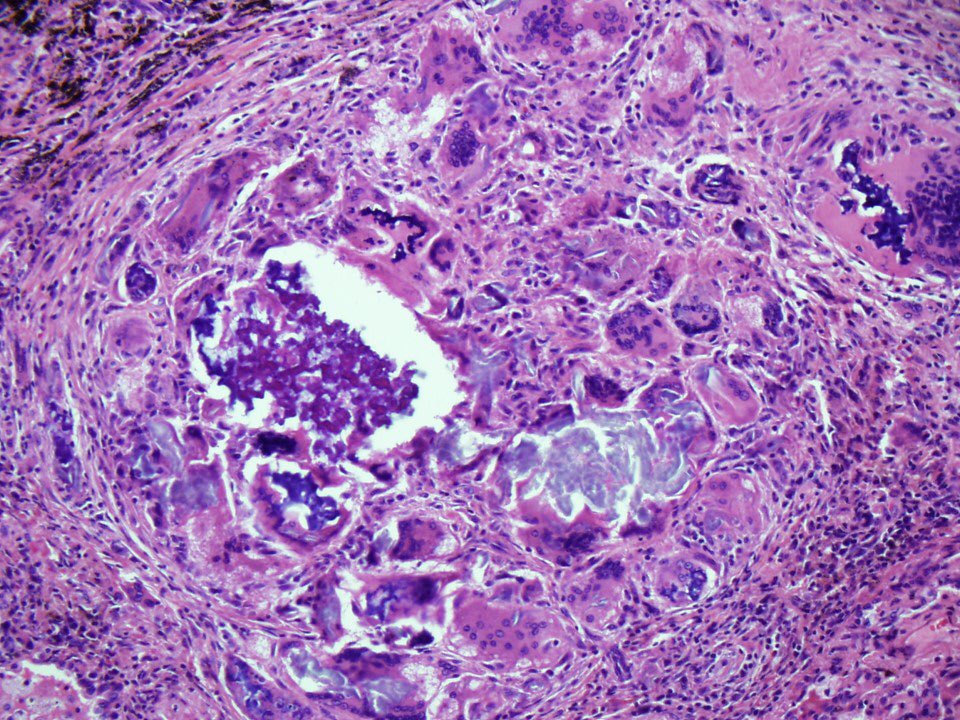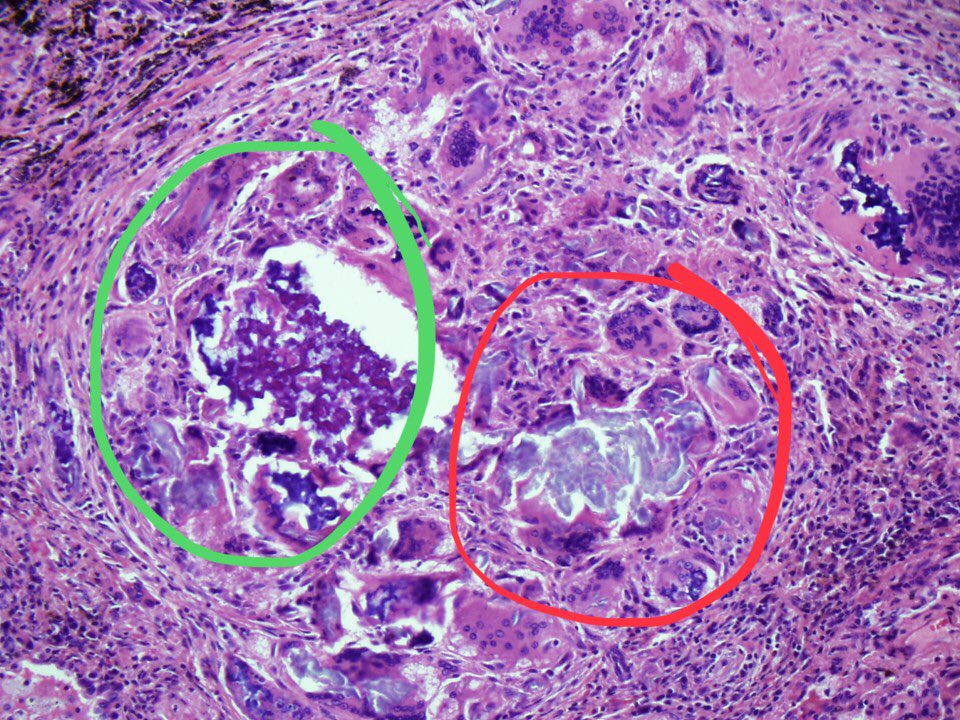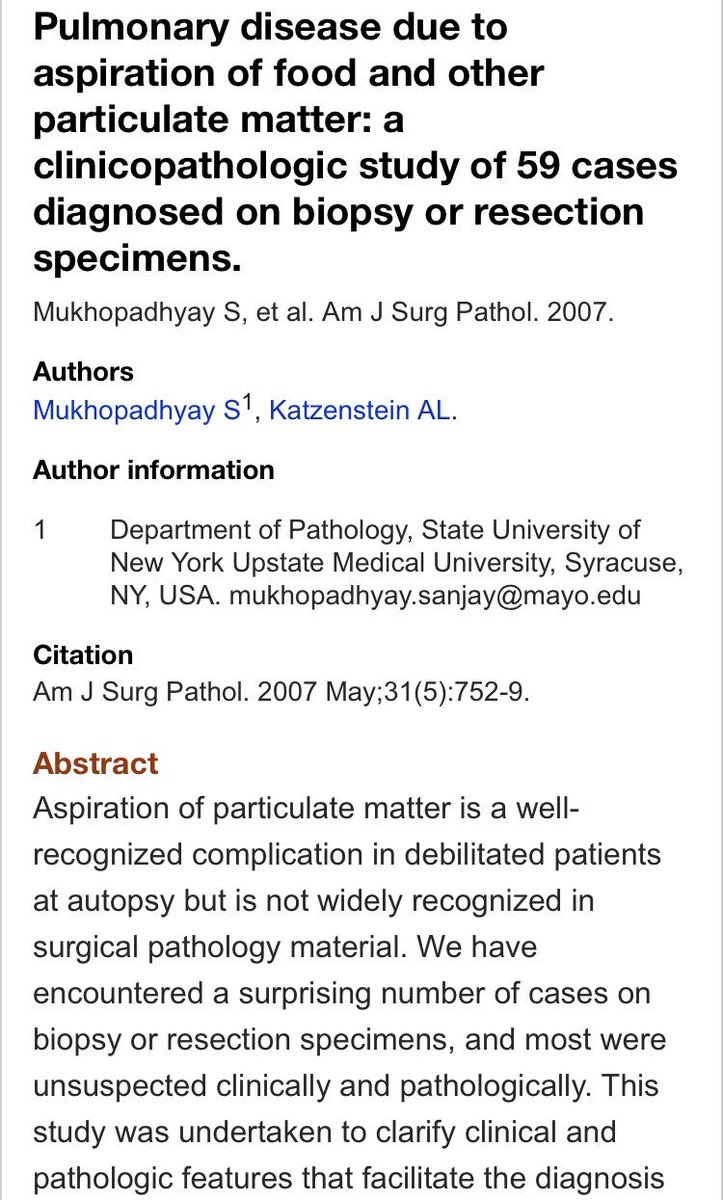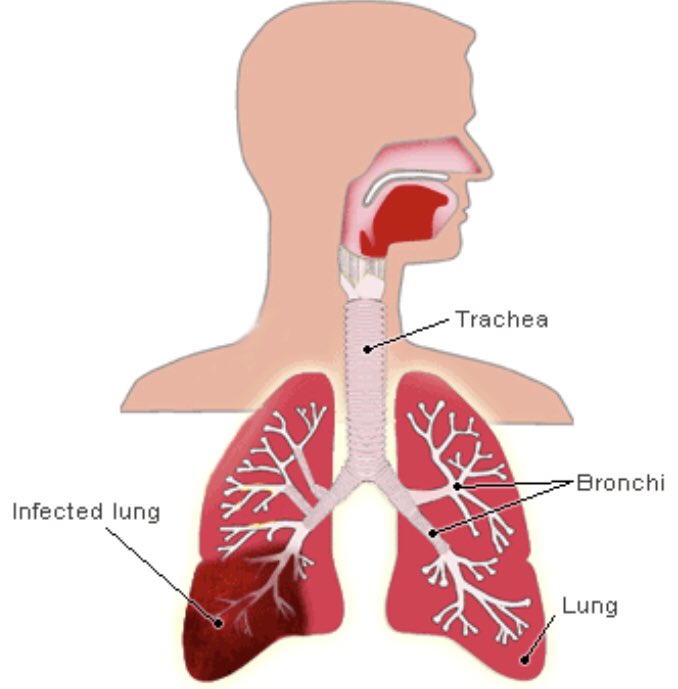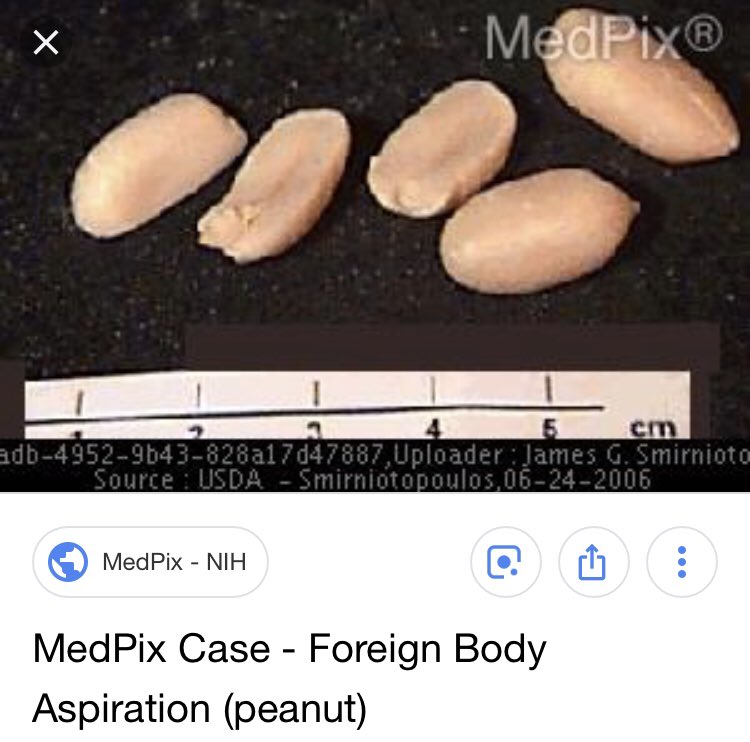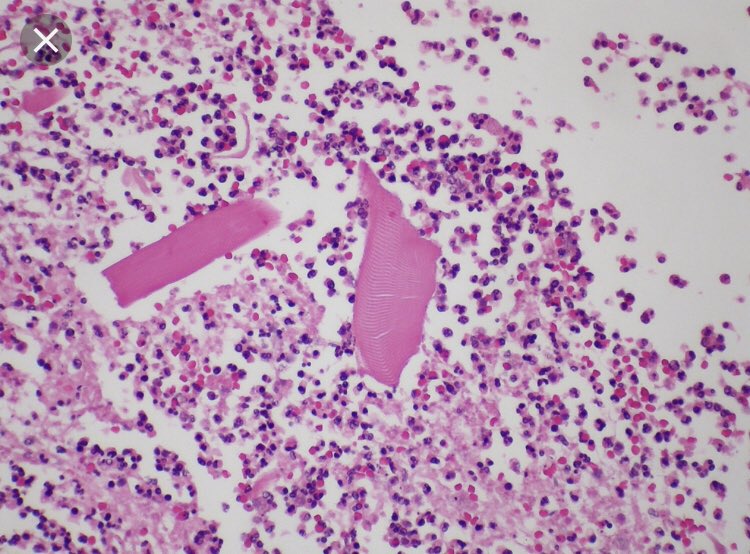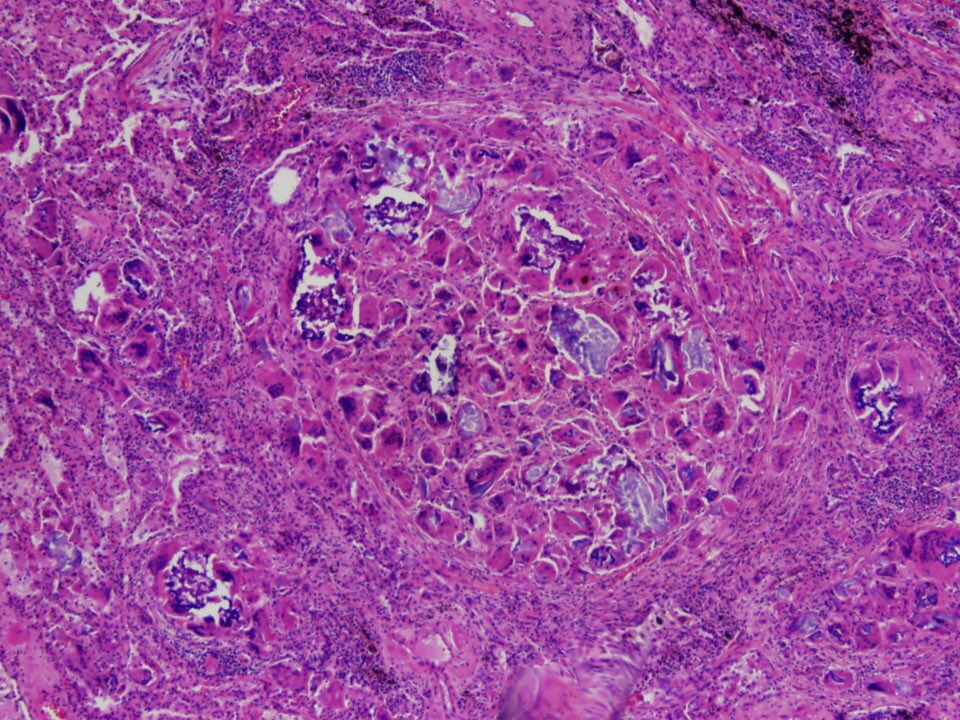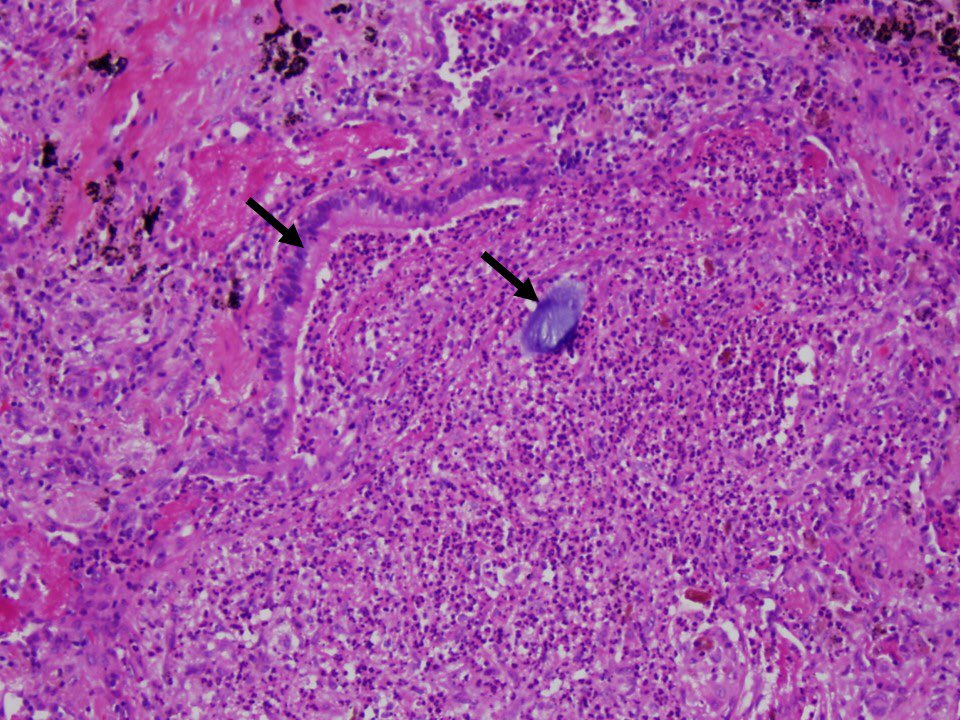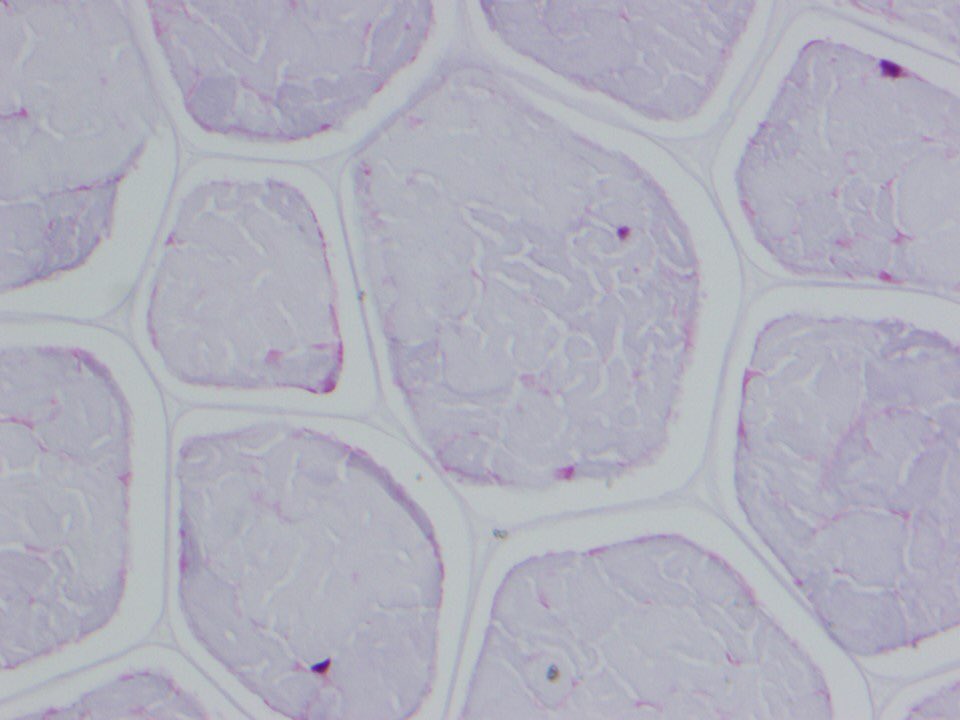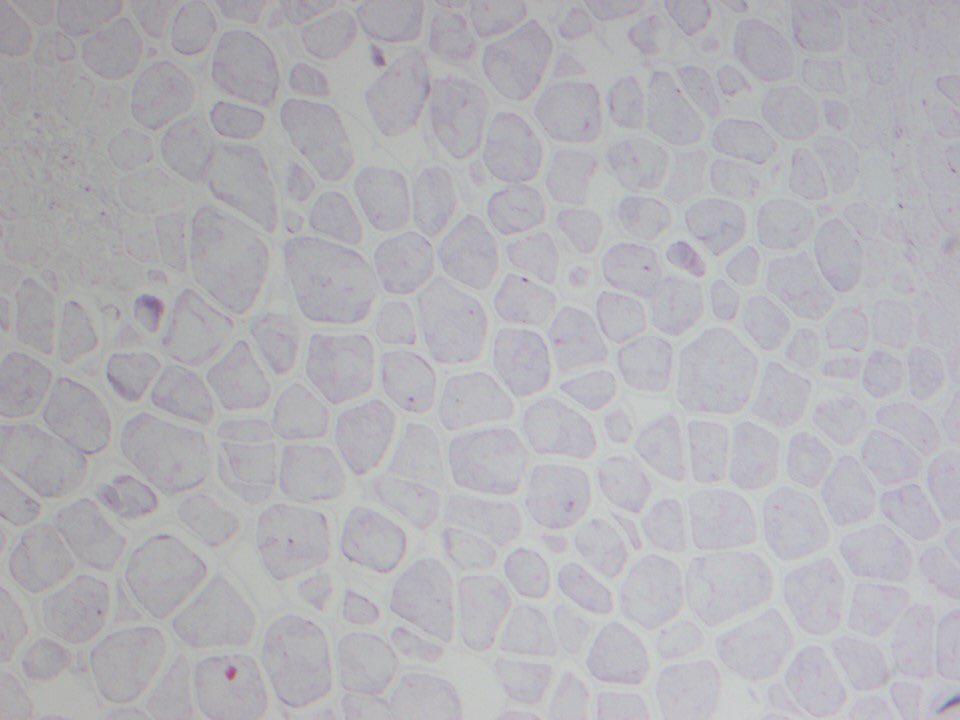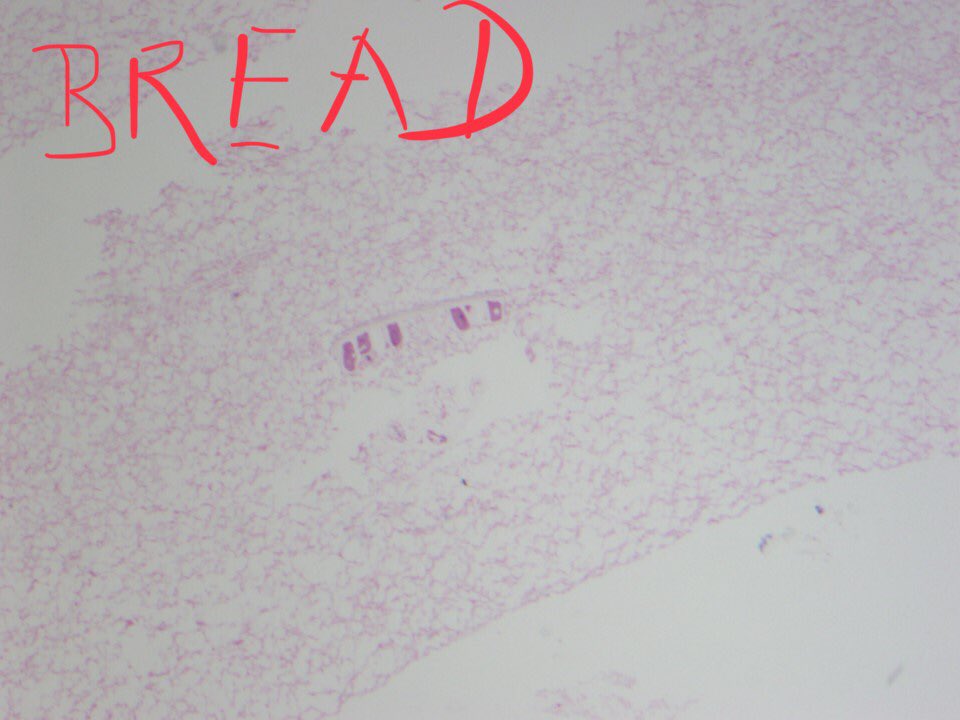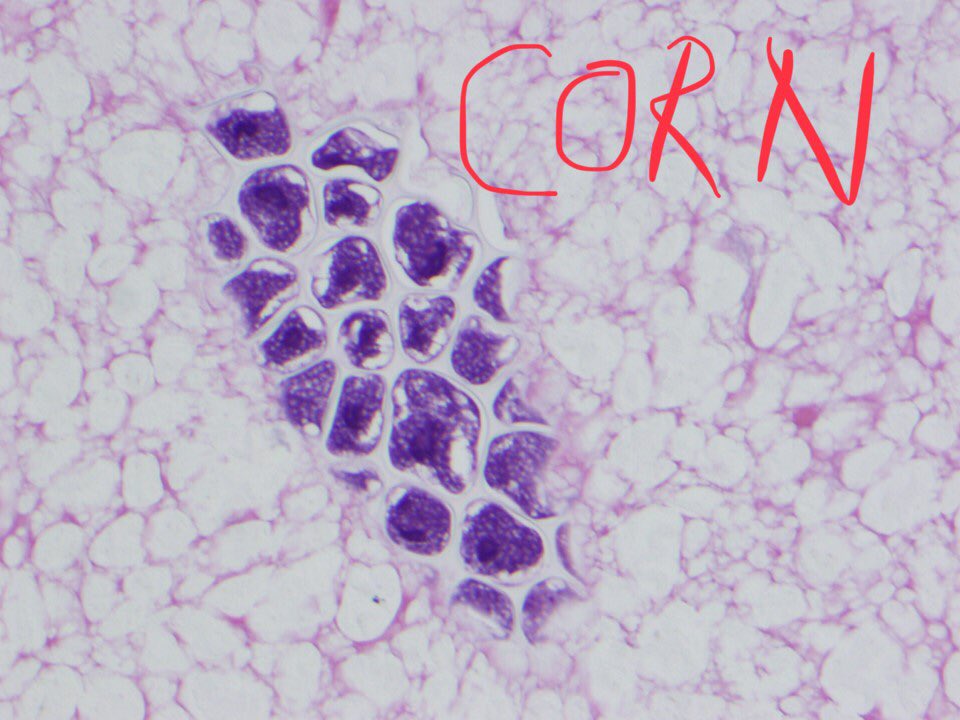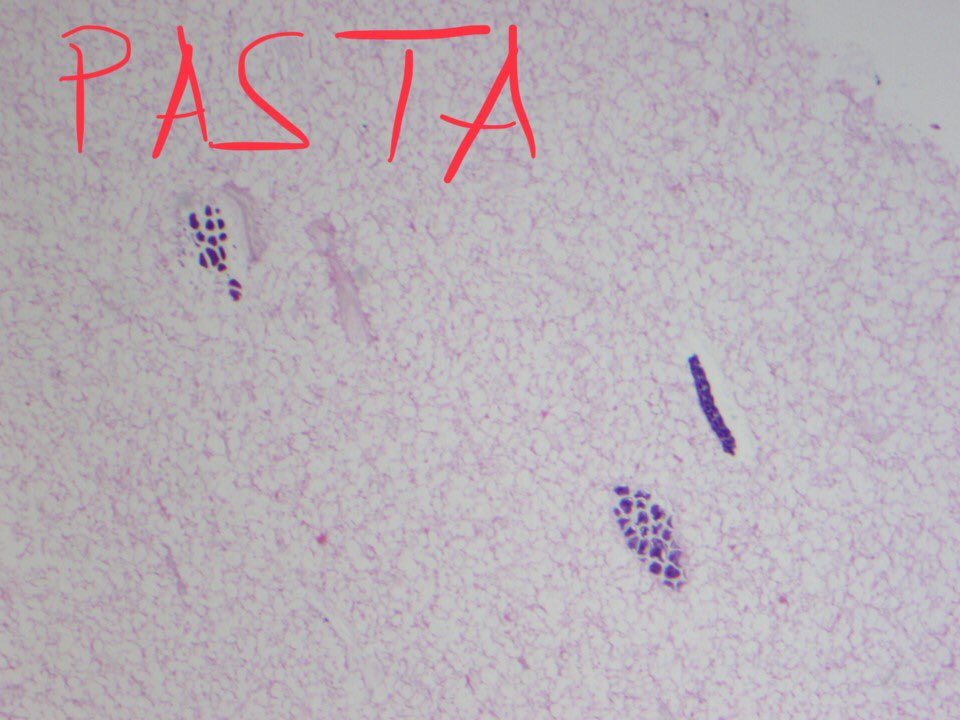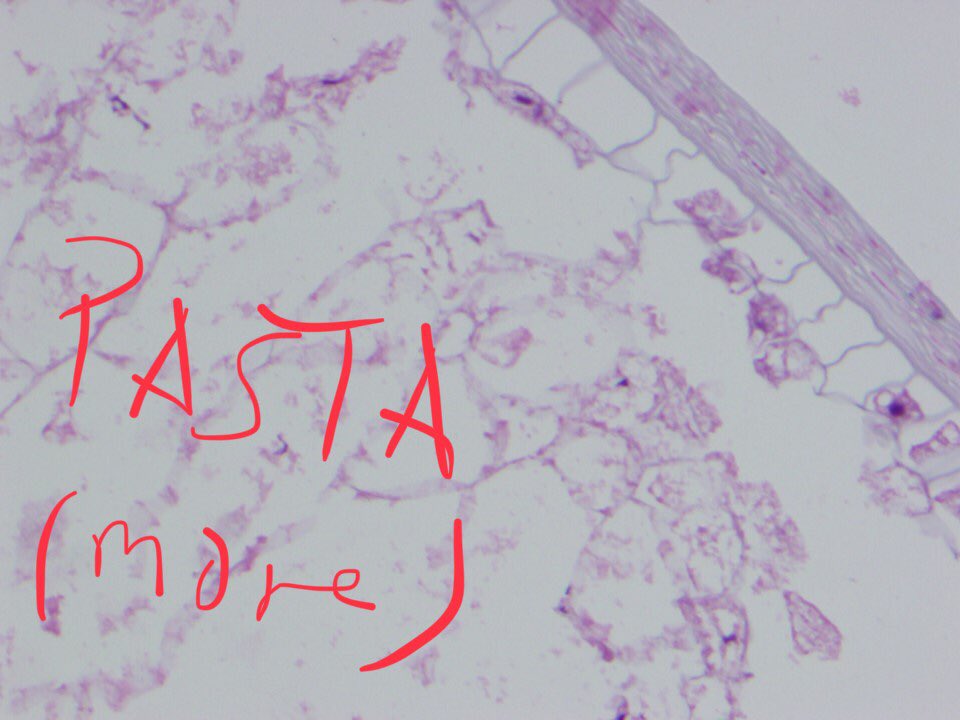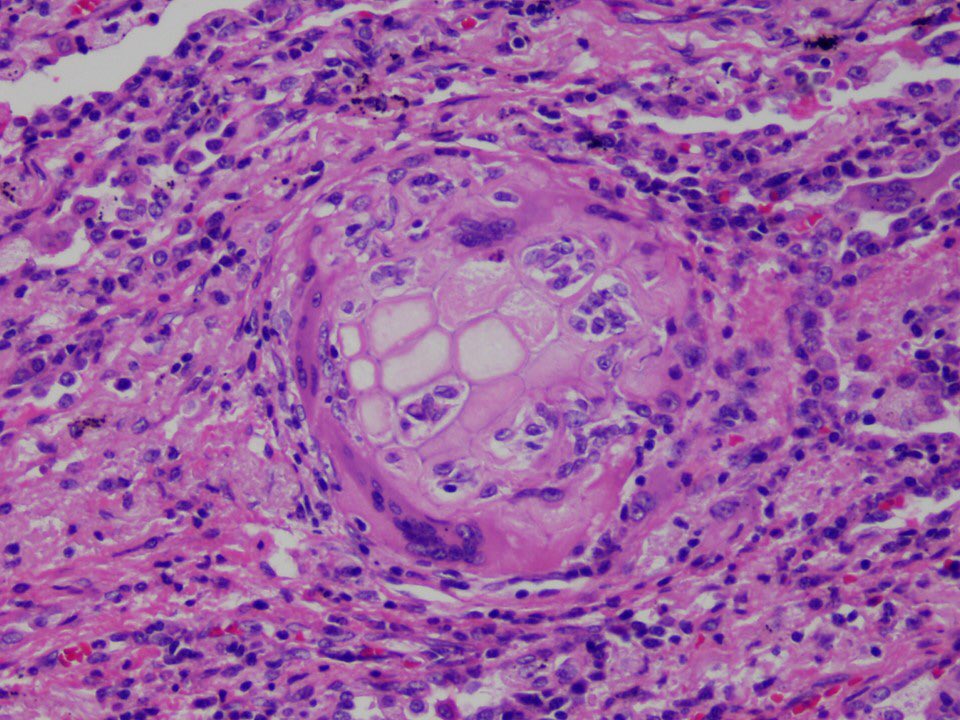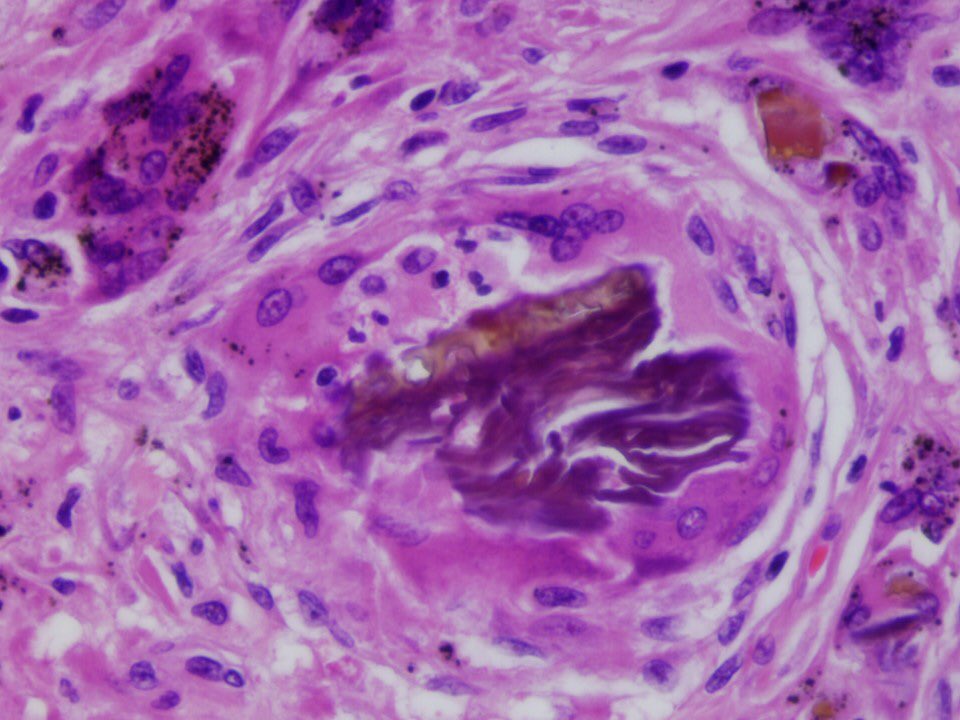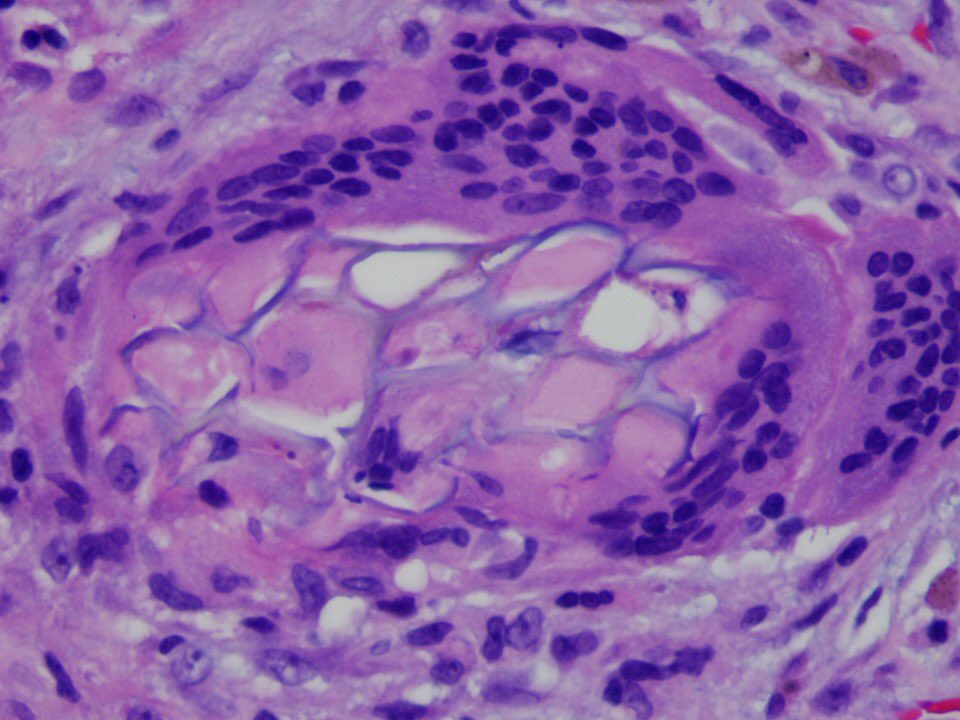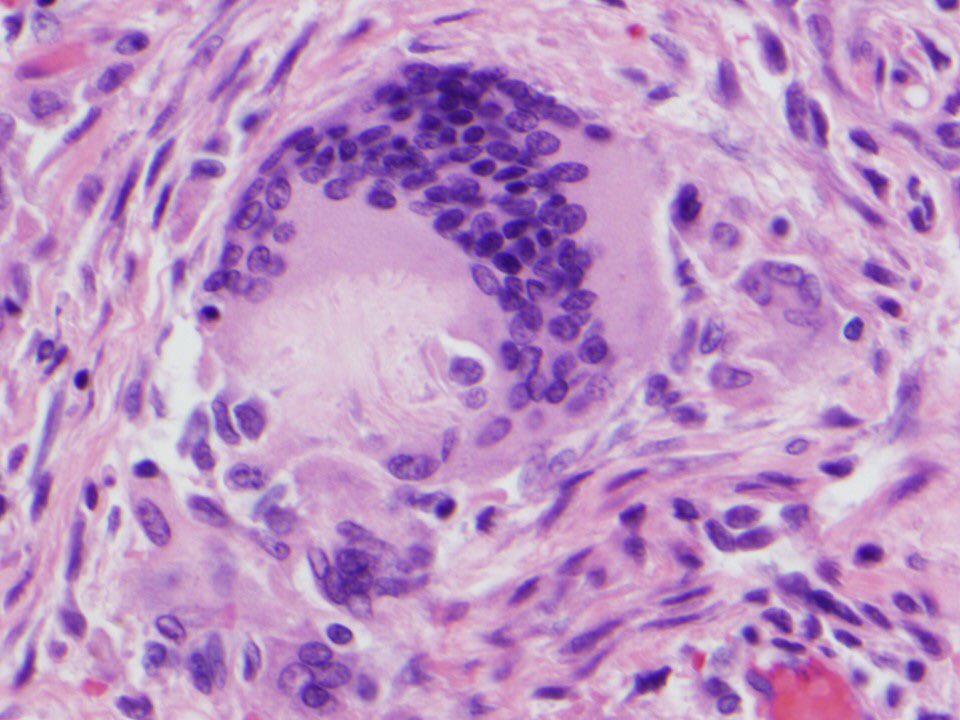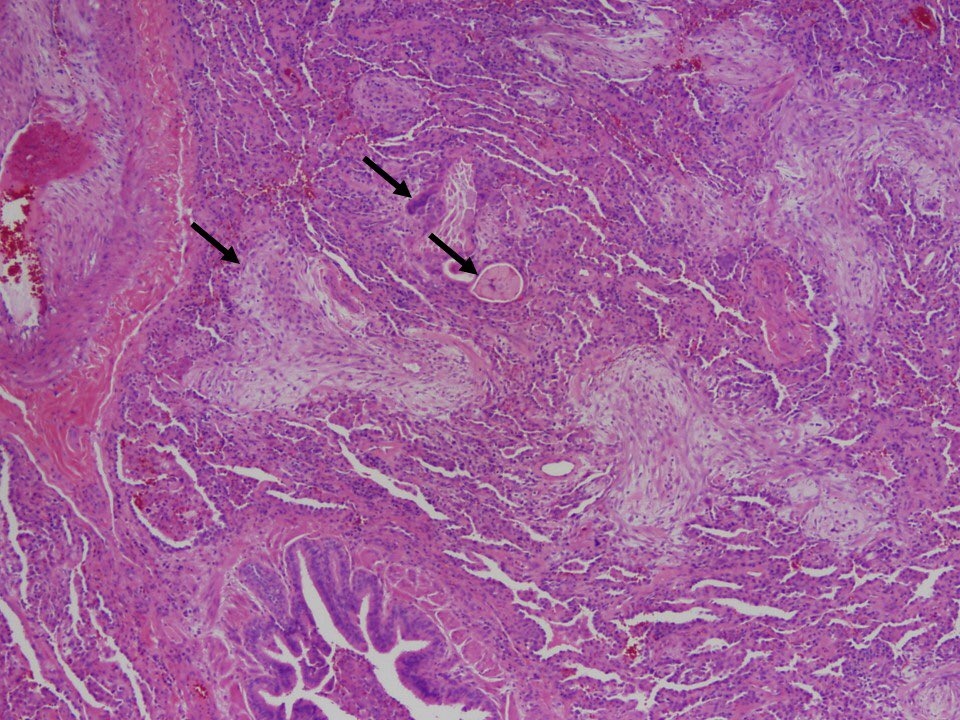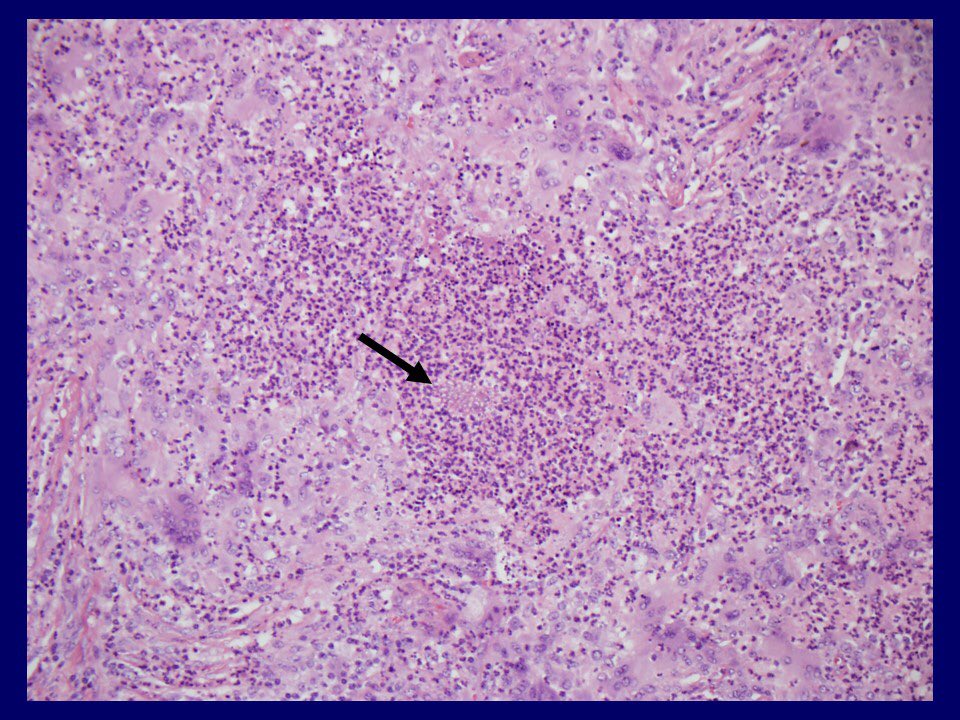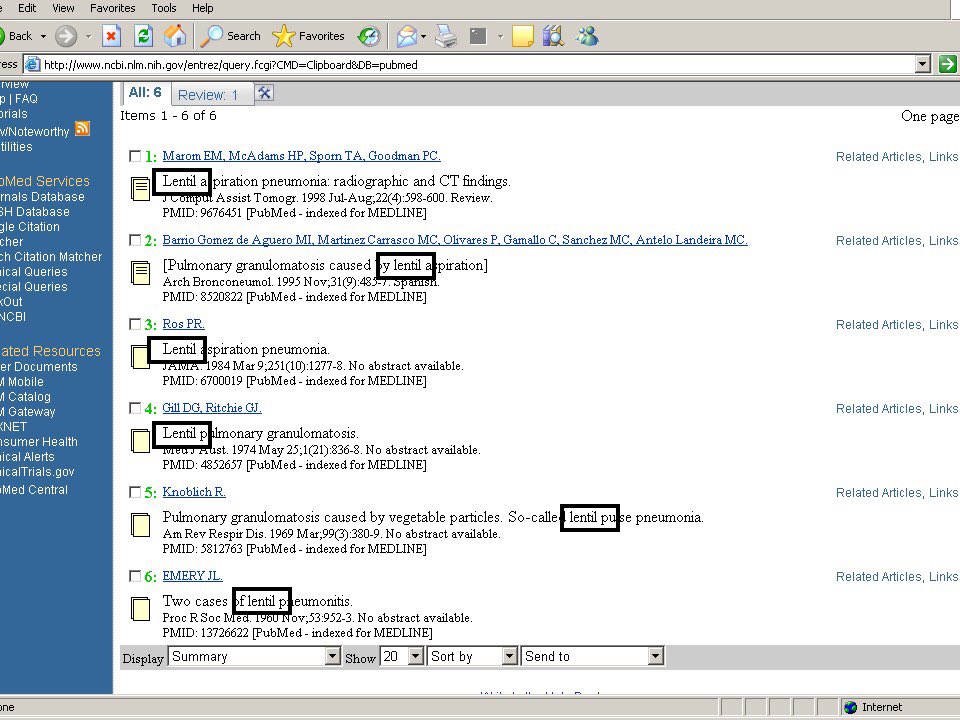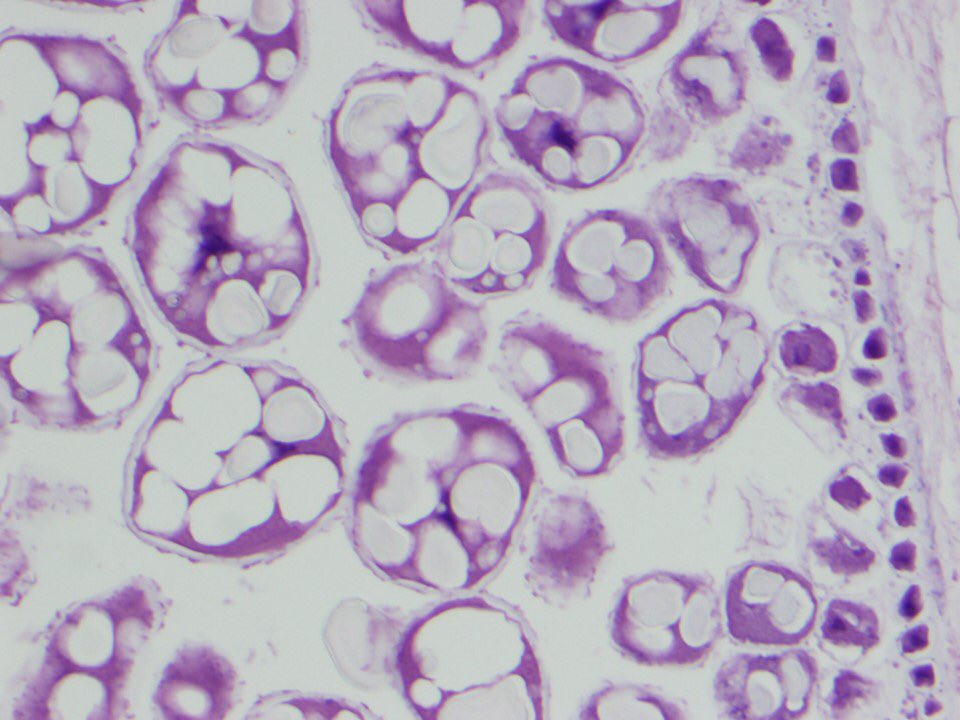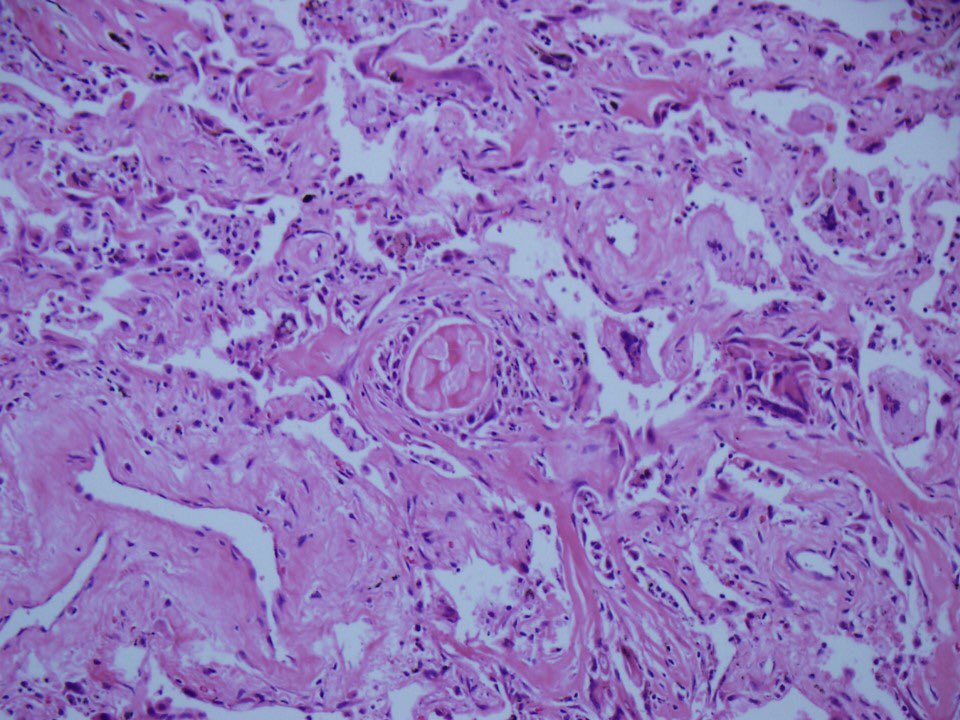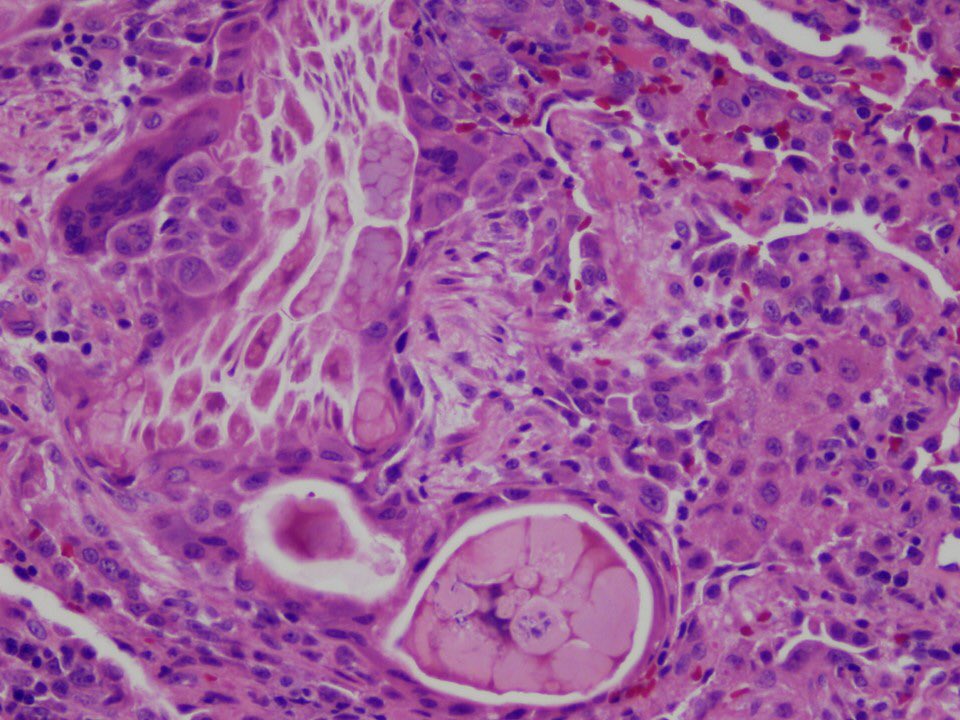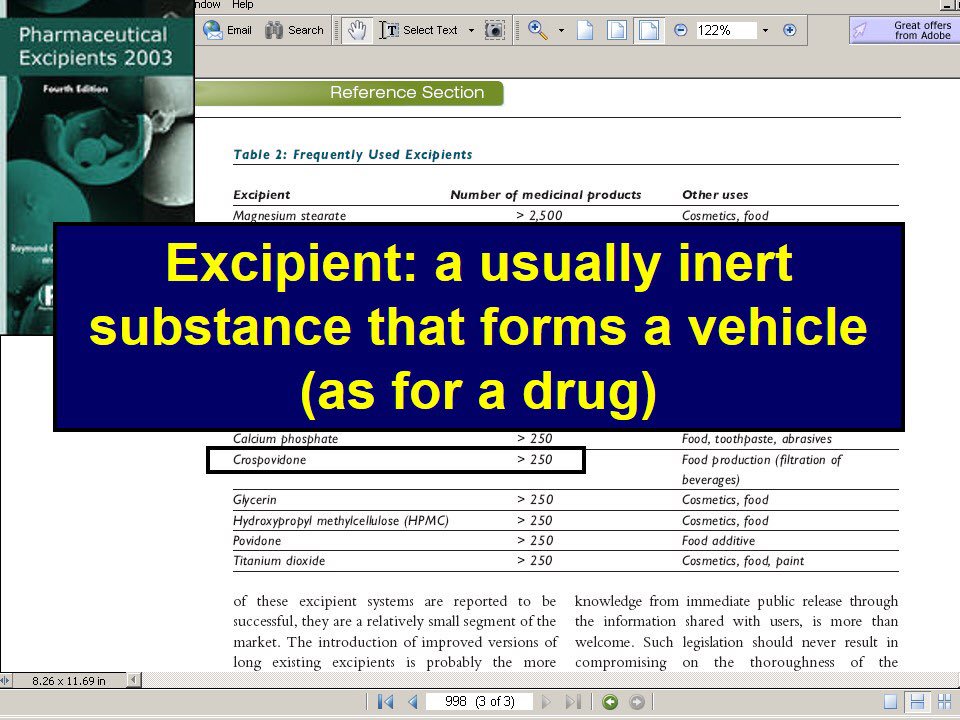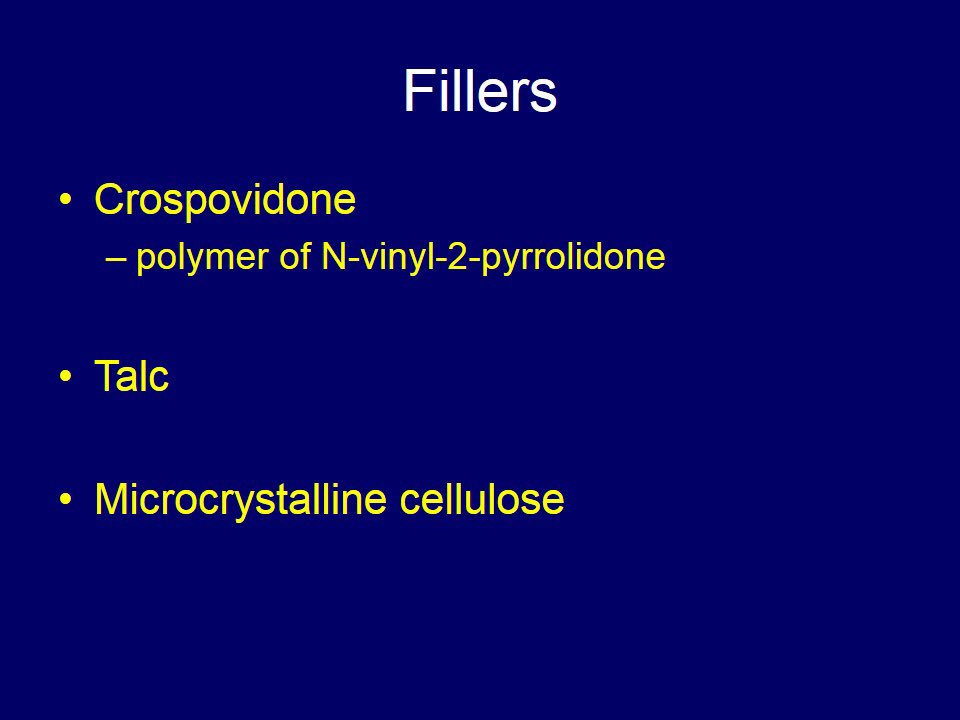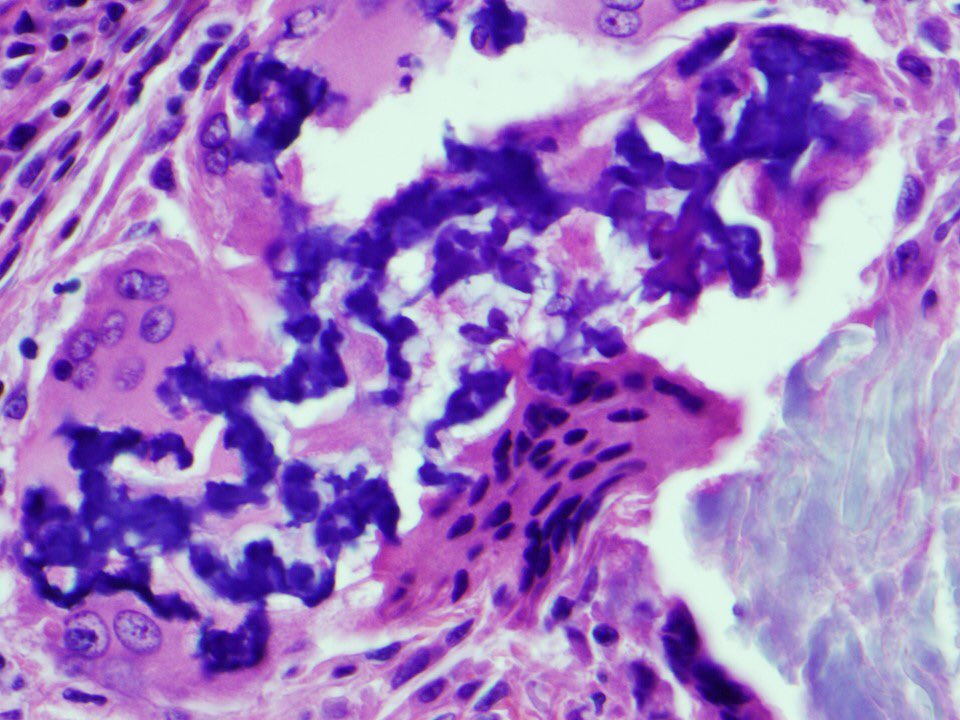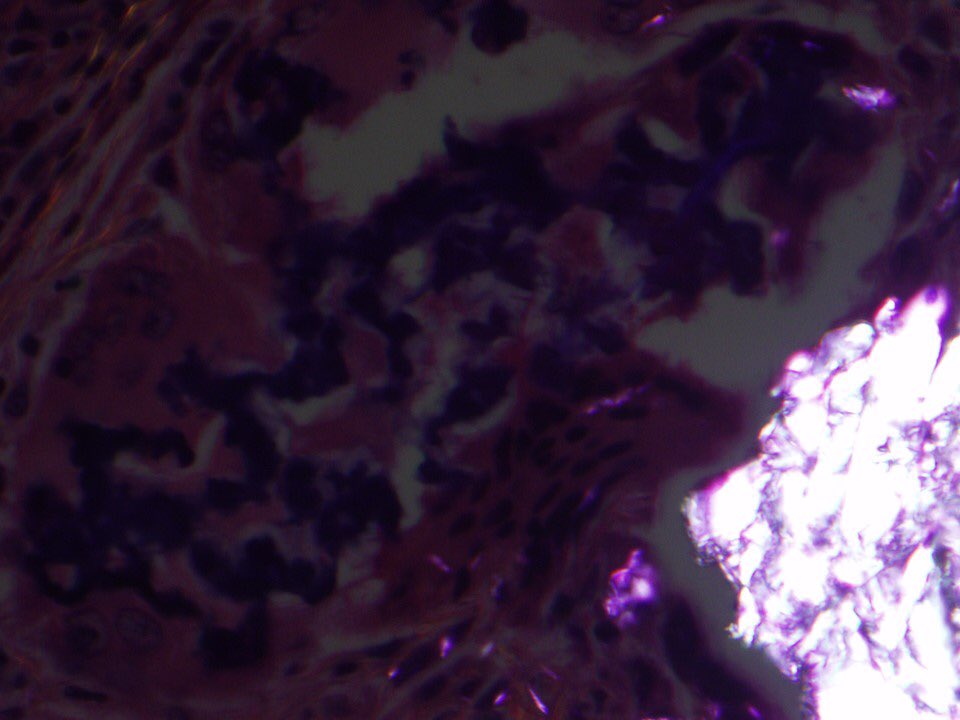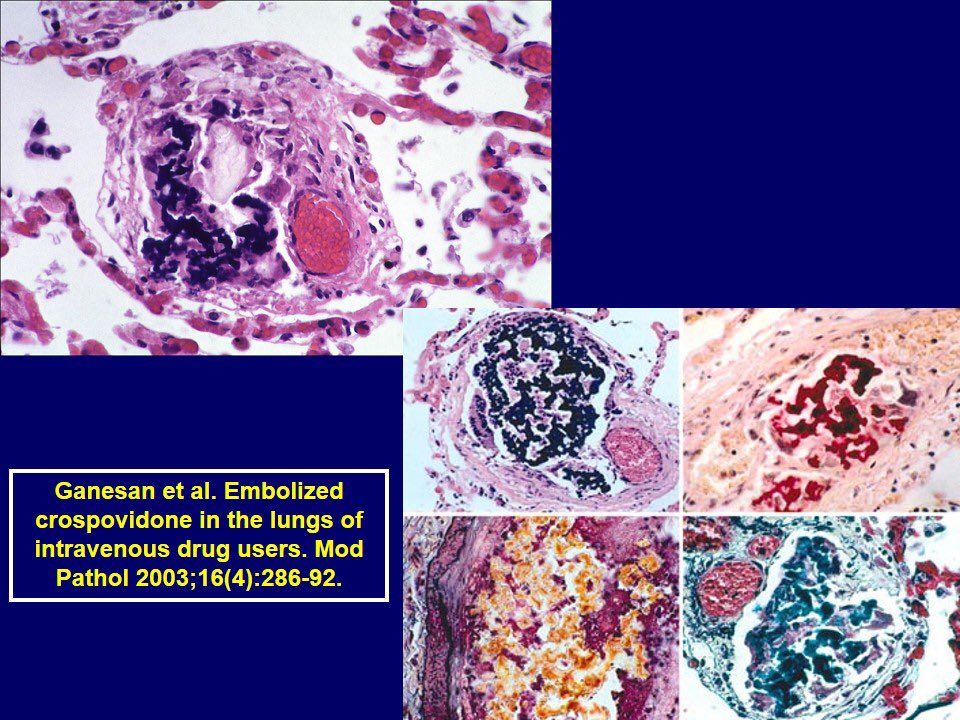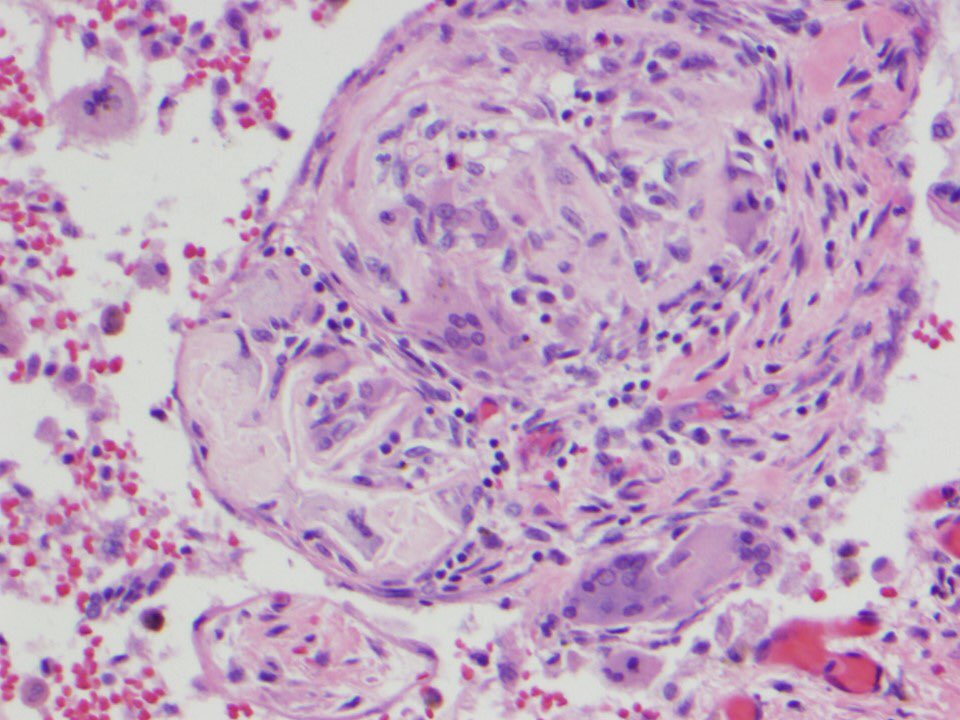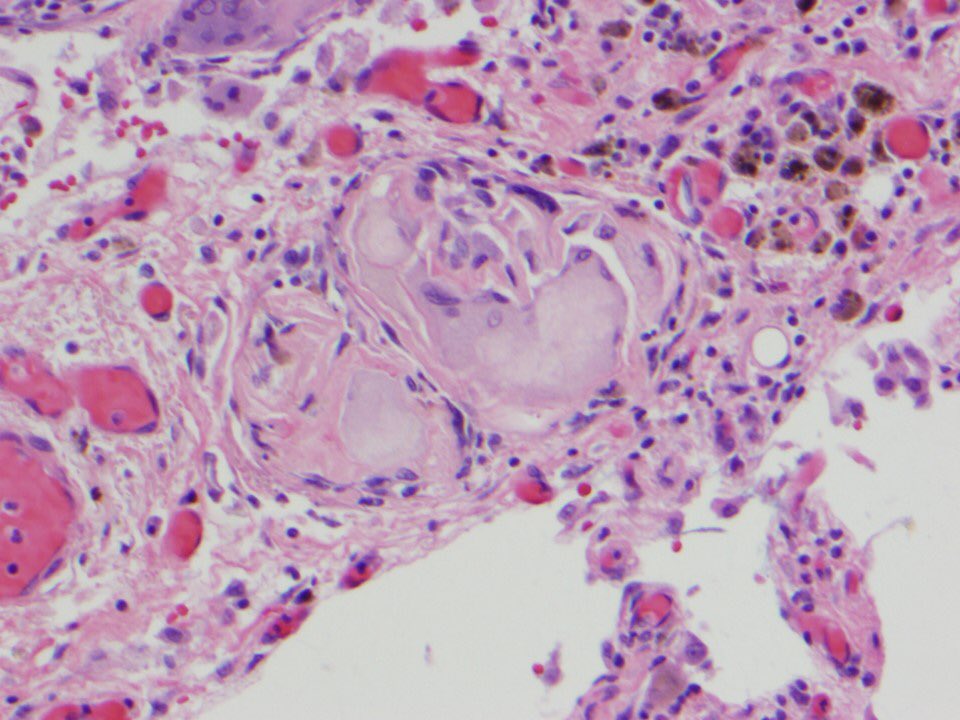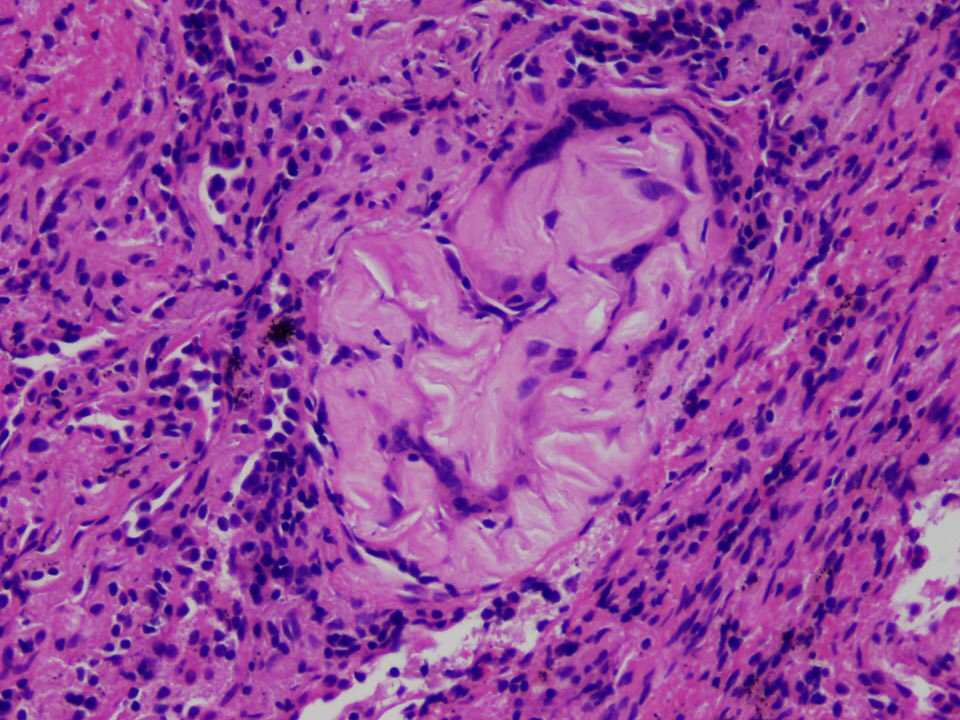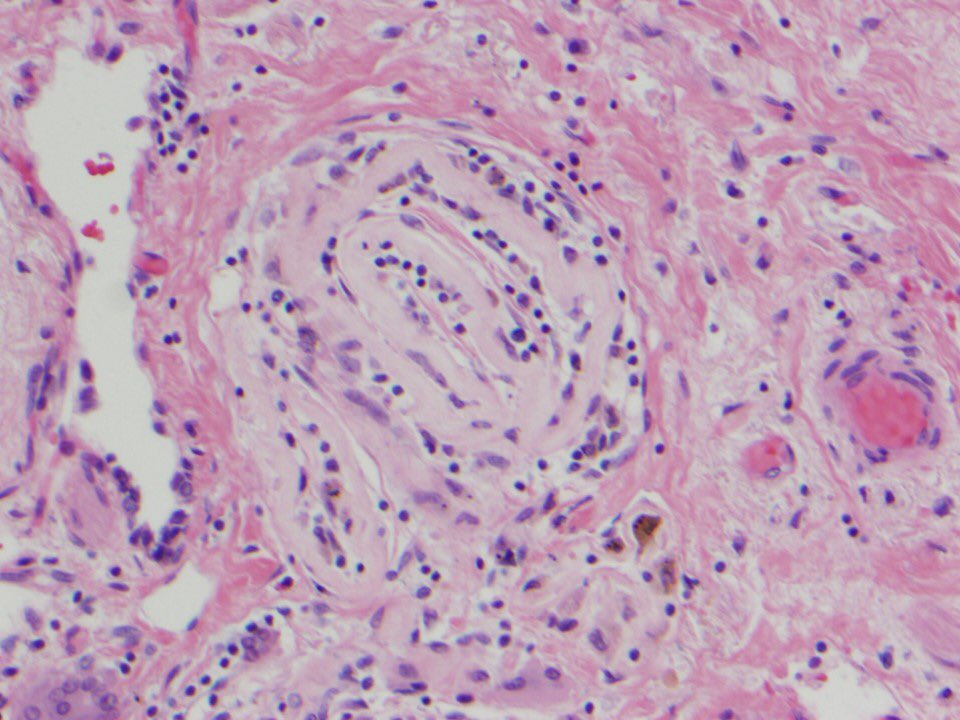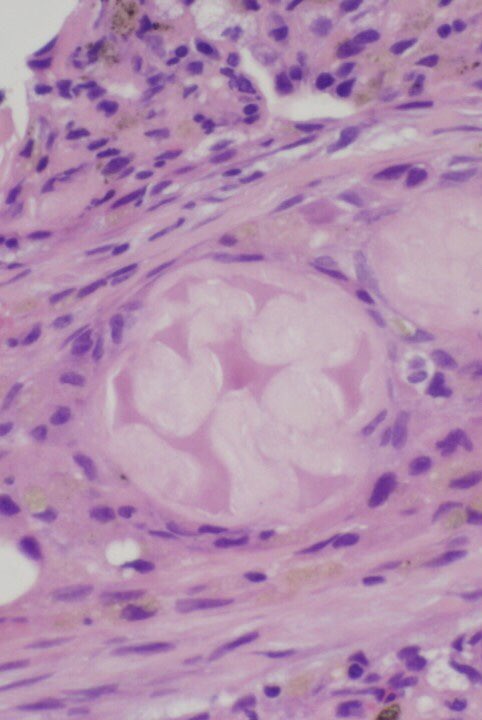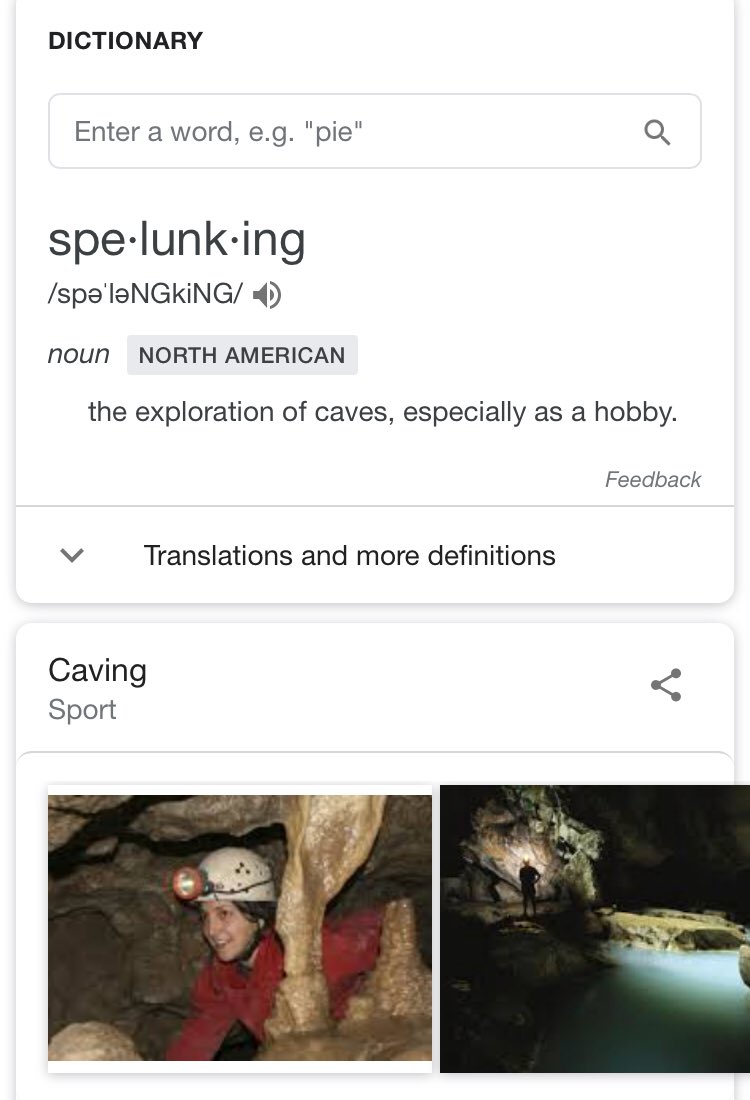This is the beginning of a #tweetorial or #pathtweetorial on a mystery topic. Fear not, it’ll become evident soon what we’re talking about. But first I’ll show you an image. These serpiginous fibroblast plugs are diagnostic if organizing pneumonia (formerly BOOP)
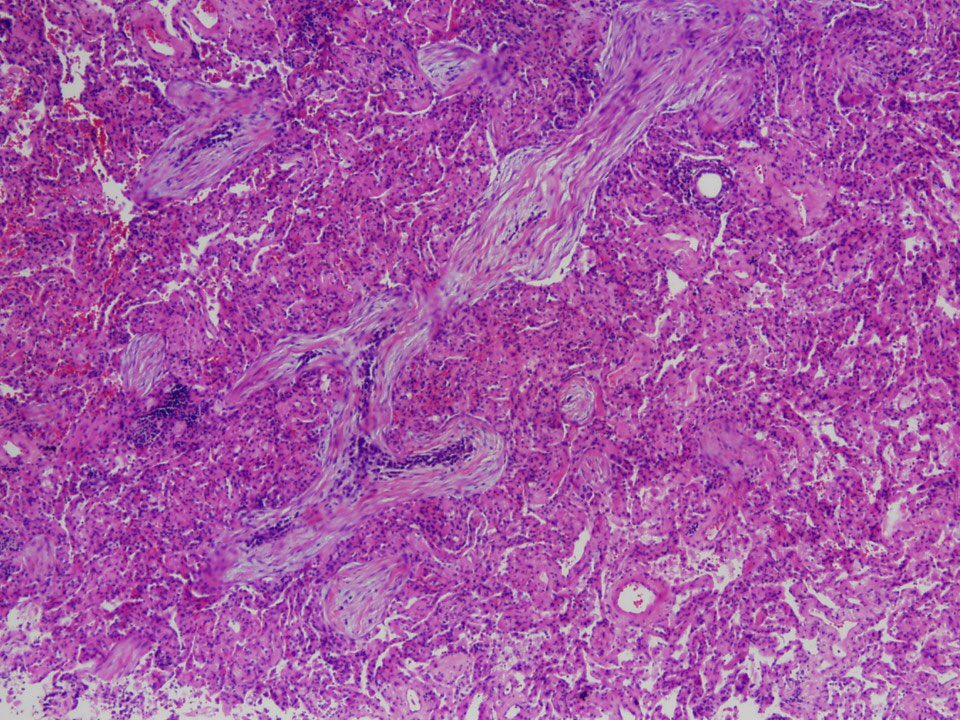
What does the pic in the previous tweet show?
Before I reveal the answer, let me show you what happened when I looked at the same field under polarized light. The particles at bottom right were birefringent but not the ones at top left. Do you know why? #pathology #pulmpath
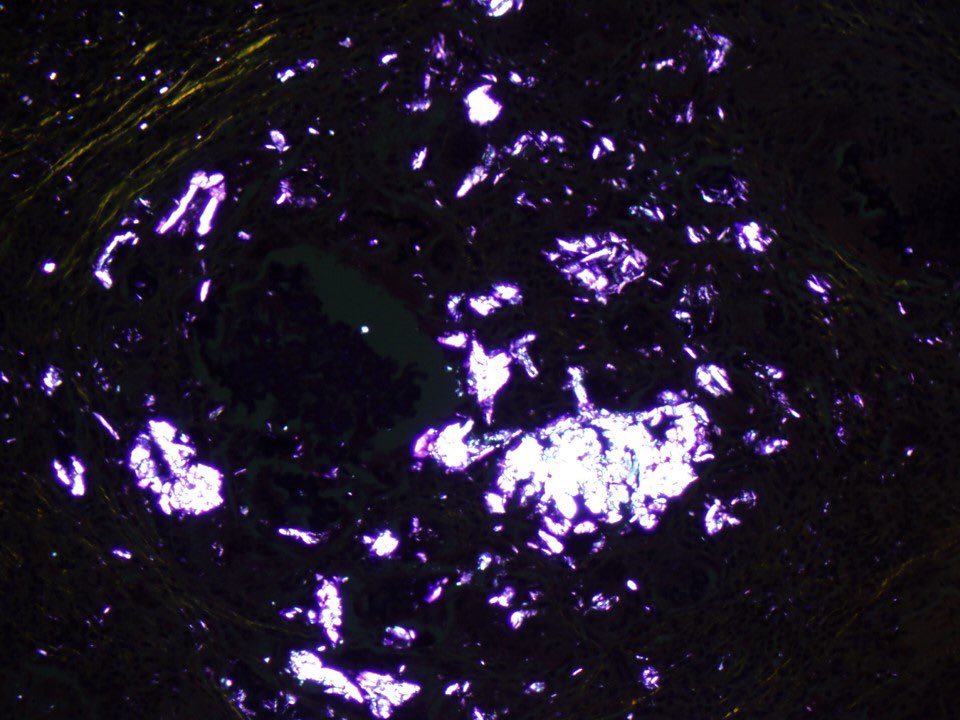
Several years ago, I did a study on cases like this diagnosed on lung biopsies by Dr. Katzenstein. It taught me a lot about the power of pathology as a diagnostic tool in some situations where clinical features and imaging can be VERY misleading.
ncbi.nlm.nih.gov/pubmed/1746046…
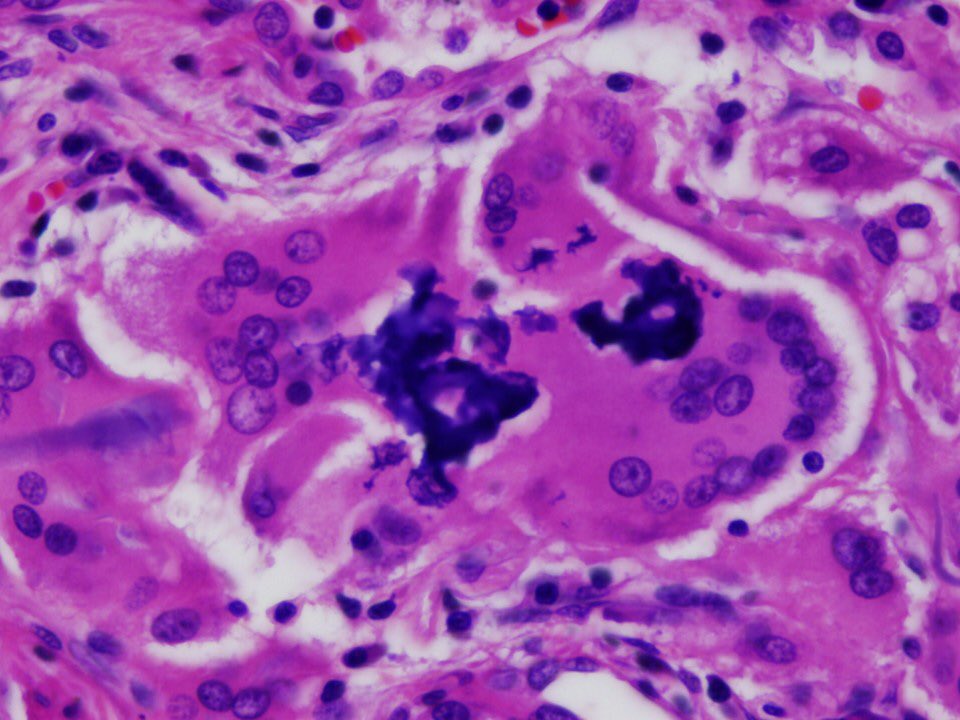
The imaging starts to get weird and deviates from standard descriptions of aspiration. You get:
1. Tree in bud opacities (reflects bronchiolitis)
2. Nodules
3. Opacities in any lobe (people aspirate when laying down)
4. Recurrent infiltrates or “recurrent pneumonia”
Over the years, I have heard odd responses to this diagnosis:
🔴 the barium swallow is normal!
🔴 she doesn’t have GERD!
🔴 the infiltrate is not in the RLL
Yet, folks have no problem attributing any infiltrate in someone with a dilated esophagus to aspiration ¯\_(ツ)_/¯
Now let’s repeat the quiz I gave in the beginning of this Tweetorial to see if we made some headway and learned something. The quiz (see next tweet in thread) is based on this pic 👇🏾
Thanks to @tony_breu for the idea to do this.
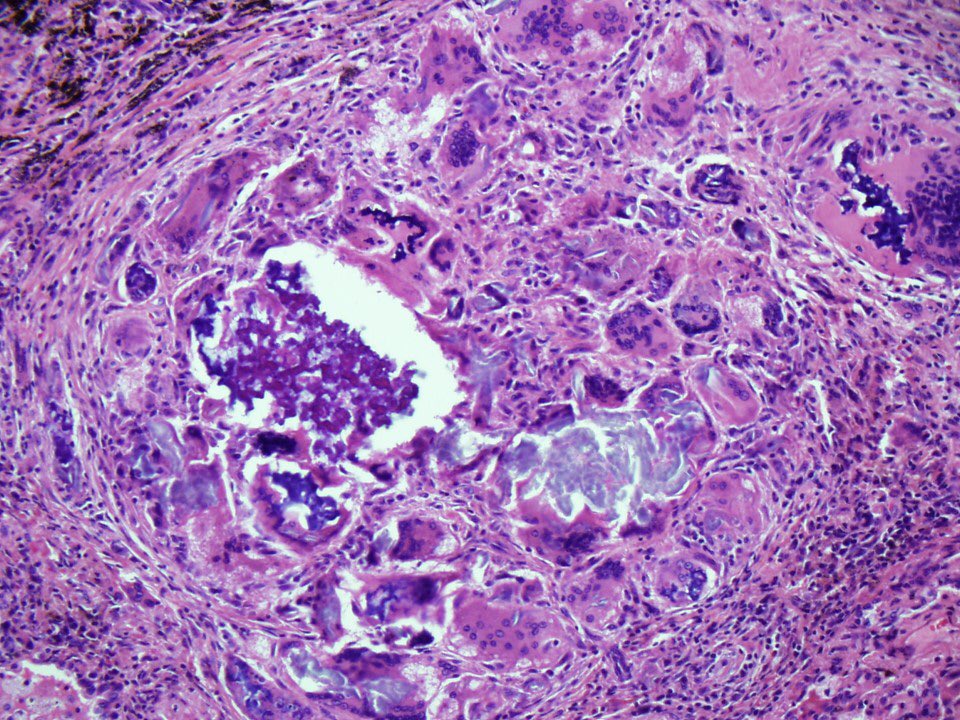
What does the pic in the previous tweet show?
